| Columns Retired Columns & Blogs |
Gradient Helsinki 1.5 loudspeaker Measurements
Sidebar 3: Measurements
I performed the quasi-anechoic measurements on the Gradient Helsinki 1.5 with DRA Labs' MLSSA system and a calibrated DPA 4006 microphone. The nearfield measurements were done with an Earthworks QTC-40 microphone, which has a ¼" capsule. Gradient specifies the Helsinki 1.5's voltage sensitivity as 85dB/2.83V/m; my estimate was 84.4dB(B)/2.83V/m, which is within experimental error of the specification. However, this is lower than average; as Art Dudley noted, the Helsinki 1.5 was a little more power-hungry than the speakers he's accustomed to. The impedance characteristic will somewhat ameliorate this appetite; though the minimum magnitude was 3.5 ohms at 250Hz, it stays above 8 ohms for the entire treble region and elsewhere drops to only 6 ohms (fig.1). However, the electrical phase angle does reach quite high values at times. Fortunately, as is usually the case, the most extreme angles occur only when the magnitude is high, taking away most of their sting.
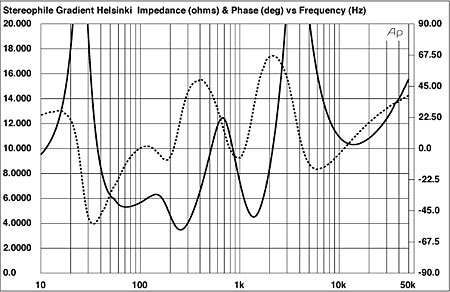
Fig.1 Gradient Helsinki 1.5, electrical impedance (solid) and phase (dashed) (2 ohms/vertical div.).
I haven't shown any measurements of the cabinet's vibrational behavior—the Helsinki 1.5 doesn't have a cabinet! The impedance traces are thus free from the usual wrinkles that indicate the presence of panel vibrations.
The Helsinki's unusual drive-unit arrangement means that it is not immediately apparent on what axis the speaker should be measured. However, Gradient's designer, Jorma Salmi, explained via e-mail that the microphone should be placed at a point 37" above the floor at a distance of 100", which is 3" above the tweeter height. This was where I placed my microphone, therefore, though at my usual distance of 50". Salmi also explained that it was not reasonable for me to make anechoic measurements at 0° because no one listens to the Helsinki from directly in front of the speaker, instead toeing in the speakers by 10–30° degrees. However, for reasons of consistency with my library of published measurements, the red trace in fig.2 shows the Helsinki's farfield response averaged across a 30° horizontal window centered on the optimal axis. It is impressively flat overall, though with perhaps a slight lack of energy in the upper midrange.
As this microphone position is edge-on to the sideways-firing, open-baffled woofer, the microphone is in the drive-unit's dipole null; the speaker's measured output therefore starts to roll off below 400Hz or so, with what appears to be an 18dB/octave ultimate slope. In a room, however, there will still be bass energy present, even at 0°. The blue trace in fig.2, therefore, shows the woofer's nearfield output, scaled in the ratio of its radiating diameter to that of the midrange unit. This drive-unit covers the octave between 30 and 300Hz, and, as AD found in his review, the integration between its output and that of the midrange unit will depend on the proximity of the listening-room walls and the angle of toe-in.
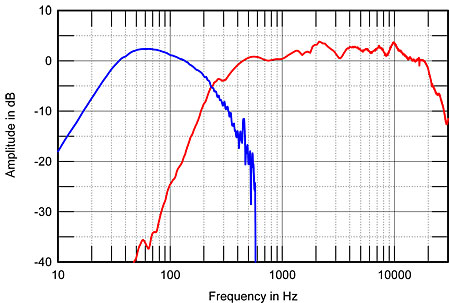
Fig.2 Gradient Helsinki 1.5, anechoic response on optimal axis at 50", averaged across 30° horizontal window and corrected for microphone response, with nearfield responses of midrange unit (red) and woofer (blue) plotted below 300Hz and 600Hz, respectively.
The rise in the woofer's output to the speaker's sides can be seen in the plot of the Gradient's lateral dispersion (fig.3), which is normalized to the response on the optimal axis. Other than a very slight off-axis flare at around 3kHz, the radiation pattern is well controlled and even up to the top of the audioband, with then a sharp narrowing in the region where the tweeter's output is also rapidly rolling off. Experimenting with toe-in will, as Art found, allow the speaker's balance to be fine-tuned. In the vertical plane (fig.4), the Helsinki maintains its even balance over a ±5° window centered on the optimal axis, though a suckout appears in the upper crossover region for very low listening positions, and the treble shelves up slightly for listening axes above that 37" from the ground.
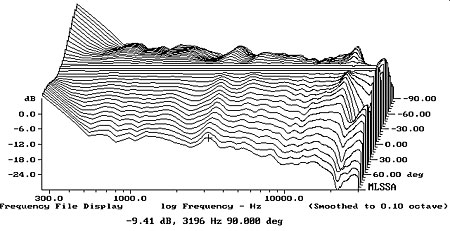
Fig.3 Gradient Helsinki 1.5, lateral response family at 50", normalized to response on optimal axis, from back to front: differences in response 90–5° off axis, reference response, differences in response 5–90° off axis.
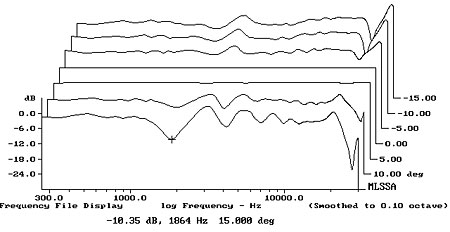
Fig.4 Gradient Helsinki 1.5, vertical response family at 50", normalized to response on optimal axis, from back to front: differences in response 15–5° above axis, reference response, differences in response 5–15° below axis.
The Helsinki's step response on the optimal axis (fig.5) indicates that both the tweeter and midrange unit are connected in positive acoustic polarity and that, even with its setback, the tweeter's output arrives at the microphone before that of the midrange unit. However, the overshoot of its step and the subsequent return of that overshoot to the time axis nicely coincides with the start of the midrange unit's step, indicating optimal crossover design and correlating with the good frequency-domain integration of the tweeter and midrange outputs seen in fig.2. The woofer is also connected in positive polarity, so as AD had the Helsinkis set-up in his room, with the woofer magnets facing inward, the positive-going wavefronts fired toward the sidewalls. The Helsinki 1.5's cumulative spectral-decay plot (fig.6) is very clean in the region covered by the tweeter, but something is going on at the top of the midrange unit's output. Perhaps this is due to the reflection of the drive-unit's output from the lower lip of the sub-baffle.
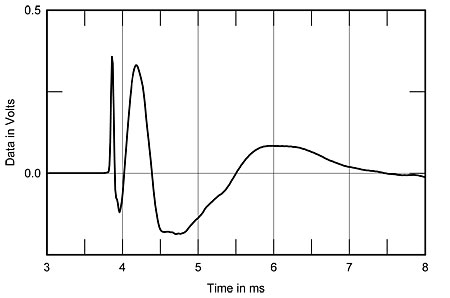
Fig.5 Gradient Helsinki 1.5, step response on optimal axis at 50" (5ms time window, 30kHz bandwidth).
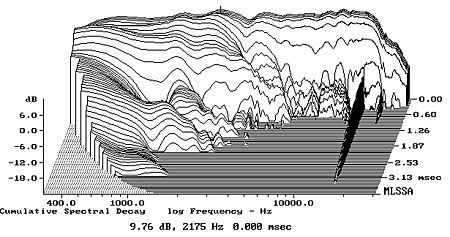
Fig.6 Gradient Helsinki 1.5, cumulative spectral-decay plot on optimal axis at 50" (0.15ms risetime).
The proof of the concept of the Gradient Helsinki's unusual design will be how its quasi-anechoic measurements work in the listening room. Unfortunately, it was not possible during the review period for me to travel to Art's place to measure the Helsinkis in his room. However, these measurements indicate that it is a well-engineered design capable of offering a neutral balance, once the listener has set it up to work with rather than against the acoustics of the room.—John Atkinson
- Log in or register to post comments




































